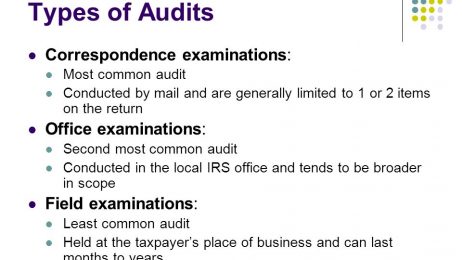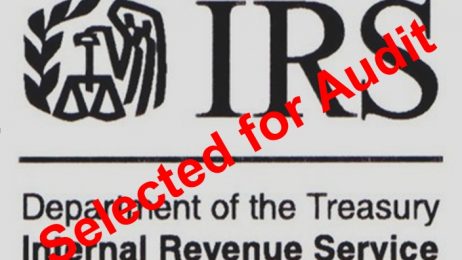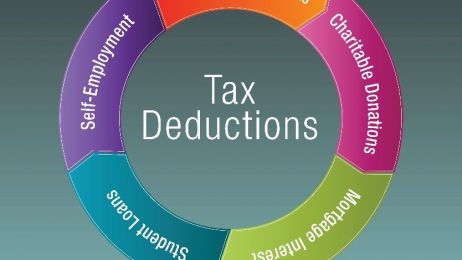| When Congress initiated our modern income tax system with the 16th Amendment to the Constitution in 1913, no one envisioned the massive system of red tape and intricate rules that we have today. As our system grew after World War II, Congress realized that they could use the income tax system to not only raise revenues to run the Federal government, but to also promote various moral, ethical or political themes.
Contrary to popular belief however, the home mortgage interest deduction was not one of those politically or ethically motivated deductions, it was just one of those things that was allowed at the beginning of the income tax system through the deduction of any form of interest. It was never changed over the years because in the early years few Americans had mortgages, and after World War II the huge number of returning service men and women that needed mortgages essentially forced Congress to leave the deduction alone!
So what are the normal deductions available to all Americans? When we prepare our annual tax returns the IRS tells us that this year about 15% of us will be able to “itemize” deductions. Years ago when we still prepared our tax returns by hand at the kitchen table, the use of itemized deductions required people to prepare the “long form”, so some folks still call it the long form today. Let’s discuss these itemized deductions, what they are, when to use them, and how to maximize their value.
Congress provides taxpayers with a “standard deduction” that they are allowed to subtract from income to determine their net taxable income. In 2018 the standard deduction for a married couple is $24,000, and $12,000 for single taxpayers. Additionally for most taxpayers Congress allows them to deduct individual “itemized” deductions on Schedule A if they add up to more than the standard deduction. Of course this usually results in less income tax for people who have more itemized deductions than the standard deduction. So either way everyone is allowed to deduct either the standard deduction or itemized deductions, whichever is higher.
Even if your itemized deductions are less than the amount of your standard deduction, you can elect to itemize deductions on your federal return rather than take the standard deduction.
If you do not itemize your deductions and later find that you should have itemized — or if you itemize your deductions and later find you should not have — you can change your return by filing Form 1040X to amend the return.
You and your spouse may use the method that gives you the lower total tax, even though one of you may pay more tax than you would have paid by using the other method. You both must use the same method of claiming deductions. If one itemizes deductions, the other should itemize because he or she will not qualify for the standard deduction.
So what are these itemized deductions? There are 5 main categories, and they are added up on IRS Form 1040, Schedule A. Surprisingly only 2 or 3 categories provide any real deductions for most people. Let’s do a short review of all of the main categories and point out some planning ideas as we go through them.
Medical expenses
Congress allows you to add up all of your medical costs for the “diagnosis, cure, mitigation, treatment or prevention of disease” within certain guidelines. Medical care expenses must be primarily to alleviate or prevent a physical or mental defect or illness. They do not include expenses that are merely beneficial to general health, such as vitamins, joining a fitness club or a vacation. An easy way to summarize whether a medical bill is deductible or not is to ask whether it was prescribed by a doctor-if so it is probably deductible, if not, sorry it is probably not deductible, except for health insurance.
The tax problem with medical expenses is that they actually provide no deduction for most people! Why? Medical costs get to be included in the list of itemized deductions only if they are more than a percentage of income, which is 7.5%. So if your family income is $100,000 and you spend $7,000 for medical costs, you get no deduction. Even if you have more than 7.5% of income in medical costs, you are only allowed to deduct the amount that is more than 7.5%. Again, if your family income is $100,000 and you spend $10,500 on medical bills, you can only include $3,000 in your list of itemized deductions.
So what can we do to plan for medical costs-it sounds like a waste of time? Well for most of us, it is a waste of time. However, if you have kids needing braces, or you have major dental, eye or medical expenses coming soon, about the only way to plan for deducting medical costs is to try and bunch all of your costs in one year. If you have had little medical expenses this year, you might want to hold off and get things done the first of next year, with the opposite being true if you already have spent a lot of money this year on medical costs, glasses, dentists and health insurance, the main categories of expenses.
Taxes
The list of deductible taxes includes state and local income tax and property tax. It does not include Federal tax. This deduction includes state tax withheld from your paycheck, which is commonly overlooked by people preparing their own returns. Sales tax may be deductible instead of state income tax based upon the year and the whims of Congress. This deduction is one of the very few itemized deductions that all Americans get to include in the Schedule A list.
The total deduction for taxes paid this year is limited to $10,000, regardless of the type. For most people that are home owners there is not a lot of planning opportunity here however because their property tax and state income tax will often exceed the $10,000 limit. About the only option is to move to a low income tax state.
Interest
The home mortgage interest deduction is the thing that usually allows people to accumulate enough itemized deductions to exceed the standard deduction. As a general rule if you don’t have a home mortgage you won’t be able to itemize. Congress allows you to include home mortgage interest in your list of itemized deductions within certain guidelines. You must own the home, the mortgagee must have a lien against your property, you have to actually pay the interest, and you are limited to interest on a loan for the first $1 million dollars (or a lower limit of $750,000 on new loans after 12/15/2017) of debt. These rules are pretty intricate, so we will leave their discussion to our office, but the simple thing to remember is to always retain IRS Form 1098 each year, because that is where the amount of interest you paid is reported.
Is there any planning you can do with home mortgage interest? Actually yes there is. First time homebuyers should always buy a home early in the year so that they get a full year of interest deductions to add in to the itemized list and possibly exceed the standard deduction. Existing homeowners should always go to their mortgagor near the end of the year and make an extra payment to pay any interest that has accrued since the last payment-this makes sense for both income tax and financial planning purposes.
There is no longer ANY deduction for equity lines, 2nd mortgages, HELOC’’s or similar items unless the borrowed money was used to improve your home.
Finally, let’s shoot down the myth that paying home mortgage interest is a good thing, tax-wise. If you pay $10,000 in mortgage interest, it does not save you $10,000-it saves you $10,000 times your tax rate, so if you are in the 25% tax bracket paying $10,000 in interest saves you $2,500 in income tax, but you are still “out of pocket” the other $7,500. We don’t have a 100% tax rate in America, so reducing the amount of interest you pay is a worthy planning goal.
Charity
You are allowed to deduct contributions to an IRS approved not for profit institution such as a charity or church in the United States. Since an individual is not an IRS approved institution there is no deduction for money given to them. The best planning ideas for charity involve trying to make contributions in one year. If you have given quite a bit this year, consider going ahead and paying next year’s amount in this year as well. If you are going to make a special gift, do it in a year that you already know you will have enough itemized deductions to exceed the standard deduction. The other thing to remember for charities is that you must have a receipt.
Other Deductions
This list is short, sweet and gone. There are no longer any deductions allowed for work boots, dues, uniforms, lock boxes, mileage or similar miscellaneous expenses. Bluntly, your employer should be reimbursing these amounts if they are work related.
Summary
This discussion of one of the most basic tax planning concepts of itemizing deductions rather than using the standard deduction includes many summaries that overlook the intricate rules involved. At our office we make sure to closely examine the rules every year for you to try and get the best treatment possible when it comes to this issue, and we are always happy to answer any questions you may have on any of the individual items in this newsletter.
This post content is courtesy of Bob Jennings of TaxSpeaker.com |













